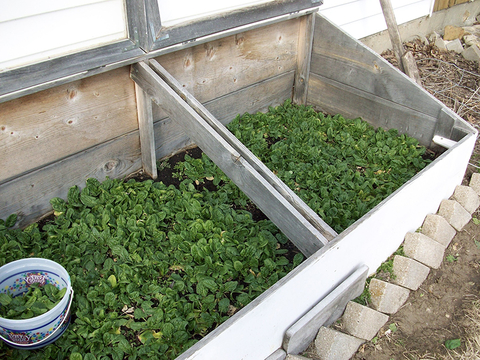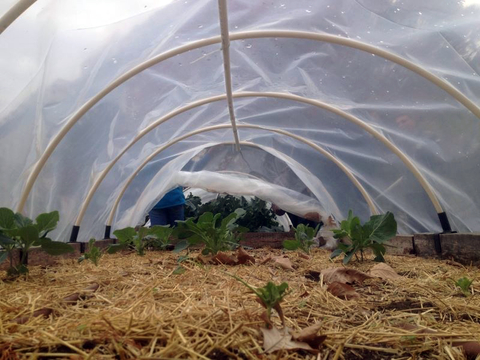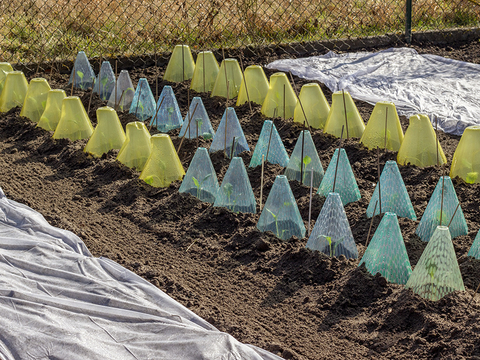The days are getting longer and the weather is getting warmer, and many of us have started our first seeds. Even still, summer feels so far away! There are ways to extend the growing season in the spring so eager gardeners can get started as soon as possible.
The greenhouse effect
While you might not want to build a greenhouse or a high tunnel in your backyard, you can achieve the same benefits on a small scale using cold frames and low tunnels.
A cold frame is a miniature greenhouse using a (usually) wooden frame and plastic or glass. You can make them with found materials, including old windows and doors. Some people fill them with soil and plant directly into them. Others use them as germination chambers or a place to harden off transplants grown indoors.
If you’re planting directly into a cold frame, wait until the soil is around 50 degrees F to plant your cool-season spring vegetables like lettuce. As the weather gets warmer, and on very sunny days, you’ll want to open it up during the day to prevent it from becoming too hot.
A low tunnel consists of a series of hoops covered in plastic. The most common ways to assemble low tunnels in gardens are with pre-fabricated hoops, or with flexible PVC placed over rebar stakes. If you have raised beds, you can attach PVC or metal hoops to the sides using u-brackets.
You can buy plastic that is pre-fabricated for hoops, or buy plastic sheets (ideally 2-6 mil thickness) from your local hardware store. Some growers use clamps to hold the plastic over the hoops, and others use string in a shoelace pattern (anchored on one side, then the other) to hold the plastic in place.
While you’ll need to wait until the ground is no longer frozen to set up hoops this spring, a low tunnel can still give you a few extra weeks of growth once the ground freezes.
On an even smaller scale, you can provide a greenhouse effect to individual plants with a variety of pre-made and DIY solutions like hot caps and milk jug greenhouses.
Pushing the last frost date
In years with warm spring weather, it can be tempting to get out into the garden before the last frost date. While certain spring vegetables like spinach and plants in the Brassica family can tolerate some frost, many garden vegetables will not.
Investing in row covers is a great option for gardeners who want to plant before the threat of a hard frost has passed. Depending on the thickness of the material, row covers can provide a few degrees of warmth, allowing crops that are not typically thought of as frost tolerant to survive cool spring nights. They are designed to allow water and light through.
Row covers can be laid directly over your plants or over hoops. They are notorious for blowing away, so make sure to secure them. Landscape staples are often sold alongside row covers as an option for holding them down, but if you garden in a windy area they may not be sufficient, and may need to be reinforced with sand bags or other heavy objects.
If you’re using row covers directly on top of your vegetables, keep an eye on them to make sure you’re not accumulating too much moisture under the row cover. You may need to remove the row cover in the mornings to allow your plants to dry.
Row covers are sold in most seed catalogs, and often at local garden centers.
Starting seeds
Even if you’re not interested or ready to invest in row covers and tunnels, you can get a head start on the season by starting seeds indoors, or by winter sowing outdoors using milk jugs. Check out our article about starting seeds and this article about winter sowing to learn more.




